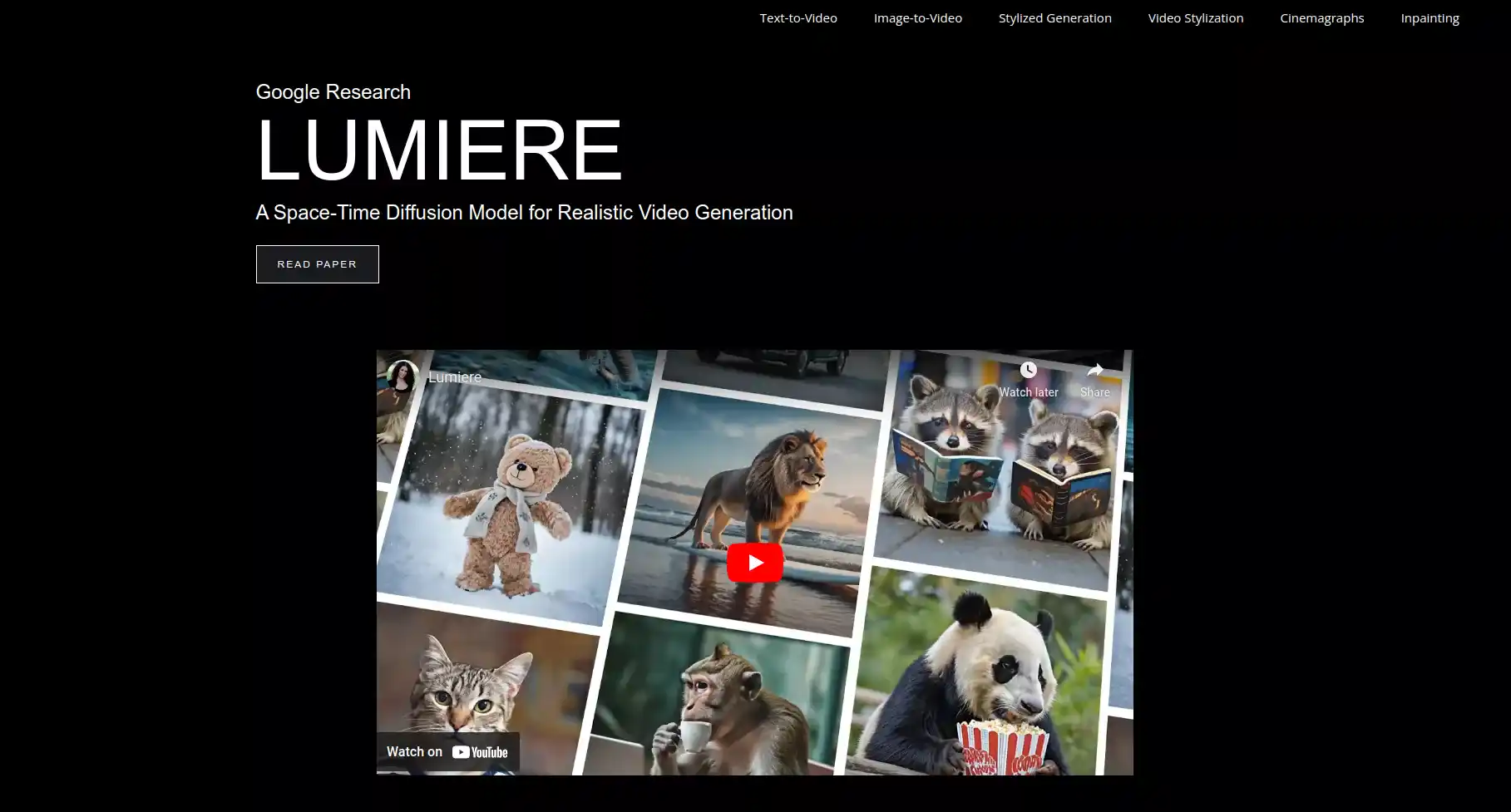Table of Contents
Google has recently unveiled Lumiere AI, a novel technology that can create realistic and diverse videos from natural language or image inputs. Lumiere AI is a space-time diffusion model that synthesizes videos in a single pass, unlike most existing models that use a cascaded approach. This results in better temporal consistency and motion quality, as well as more flexibility in video editing and generation.

How does it work?
Lumiere AI, which means light in French, is a video diffusion model that leverages a pre-trained text-to-image diffusion model and a Space-Time U-Net architecture. A diffusion model is a type of generative model that reverses the process of adding noise to an image or a video, gradually refining it until it matches the desired output. A Space-Time U-Net is a neural network that uses both spatial and temporal down- and up-sampling to process videos in multiple space-time scales.
By combining these two techniques, Lumiere AI can generate the entire temporal duration of the video at once, without relying on intermediate keyframes or temporal super-resolution models. This allows Lumiere AI to produce realistic and coherent motion and handle longer and higher-resolution videos.
What can it do?
Lumiere AI can generate realistic and stylized videos from text or image inputs, as well as edit them on command. For example, users can give text inputs describing what they want to see in the video, such as “a dog chasing a ball in the park”, and Lumiere AI will generate a video portraying that. Users can also upload an existing still image and add a prompt to transform it into a dynamic video, such as “add rain and thunder to this image”.
Lumiere AI also supports features such as inpainting, cinematography, and stylized generation. Inpainting is the ability to insert specific objects or regions to edit videos with text prompts, such as “add a cat to this video”. Cinemagraph is the ability to add motion to specific parts of a scene, such as “make the water flow in this image”. Stylized generation is the ability to take reference style from one image and generate videos using that, such as “make this video look like a painting”.
The researchers behind Lumiere AI claim that their model can facilitate a wide range of content creation tasks and video editing applications, and demonstrate state-of-the-art text-to-video generation results.
How does Lumiere AI compare to other AI video models?
It is not the first model to attempt realistic video generation, but it is one of the most advanced ones. The researchers compared Lumiere AI with other AI video models, such as Pika, Runway, Stability AI, and ImagenVideo, and found that Lumiere AI outperformed them in terms of motion magnitude, temporal consistency, and overall quality.
The researchers also conducted a user study, where they asked participants to rate the quality of the videos generated by different models from text and image inputs. The results showed that Lumiere AI was preferred by the users over the other models for both text and image-to-video generation.
What are the limitations and challenges?
Lumiere AI is a promising technology that can open up new possibilities for video generation and editing, but it has limitations and challenges. The model is not available to test yet, and the source of the data used to train it is unclear. The model also has difficulty generating videos that consist of multiple shots or involve transitions between scenes, which is a common feature of natural videos. Moreover, the model may face ethical and social issues, such as the potential misuse of the technology for creating fake or harmful videos.
The researchers acknowledge these limitations and challenges and suggest future directions for improving and expanding Lumiere AI. They hope that their work will inspire more research and innovation in the field of realistic video generation.